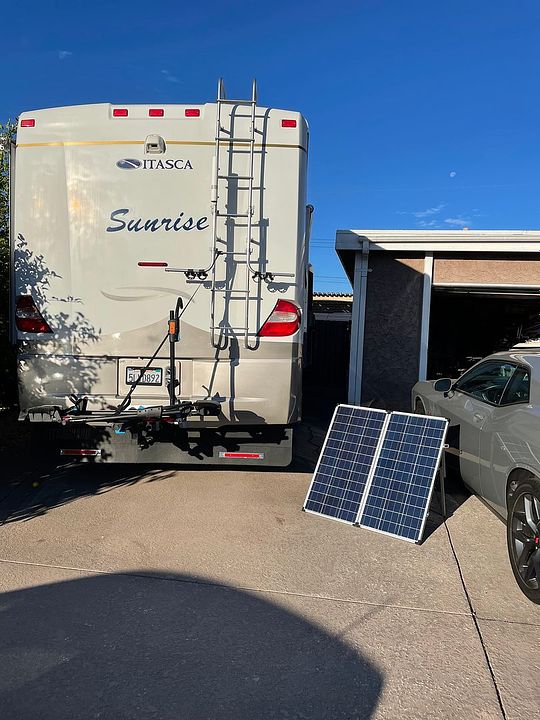In a recent power upgrade on our motorhome, the 600W inverter which draws 50-60A max on 12V got 4 gauge wire and a 80A ANL fuse.
The charge controller outputs max 30A and got 8 gauge wire and a 40A switching breaker. All connect to the house battery bank - 2 GC2's which will soon be upgraded to a 230A LiFePO4 pack. My solar panels are wired in series, two sets on two controllers, so they are not fused.
Panels should have a disconnect for safety and servicing. A mini double-breaker in a box works great on two legs, saves you going up on the roof to unplug panels should you want to stop their power input. The switching breaker can also shut down the charge controller.
My second set of panels - portables, have their own controller, it got 10 gauge wire and a 20A breaker to the same battery bank.
Your golfcart batteries are like 210-220A each, in series to make 12V they are still the same amperage, and two banks of two makes double that. However flooded lead acid (FLA) batteries should not be discharged more than 50% or they suffer a very short life. The plates sulfate over and will no longer hold a charge.
You'll want to find out from the fridge specs what it's draw is, estimate running time, and that will tell you how much battery capacity it will use. And then based on what your charge sources will provide to charge them back up. If it's an ammonia absorption fridge with a propane burner (2-way) and AC burner then the board uses about an amp and a half when it's on propane. I'm not sure what the 120V burner uses, but I would not try to run it that way on battery power - it could well use 50amps 12V.
Here's how I setup my two charge controllers in the entry step - gas coach so it's at mid-point on the coach instead of at the very front. A lot of folks like to hide them in a battery compartment and install a remote display. I operate on the KISS principle.

Portables deployed, they're 160W feeding a 10A mppt (left, above):
And the new panels on the roof - 2@ 215W feeding the 30A mppt controller (right, above):





